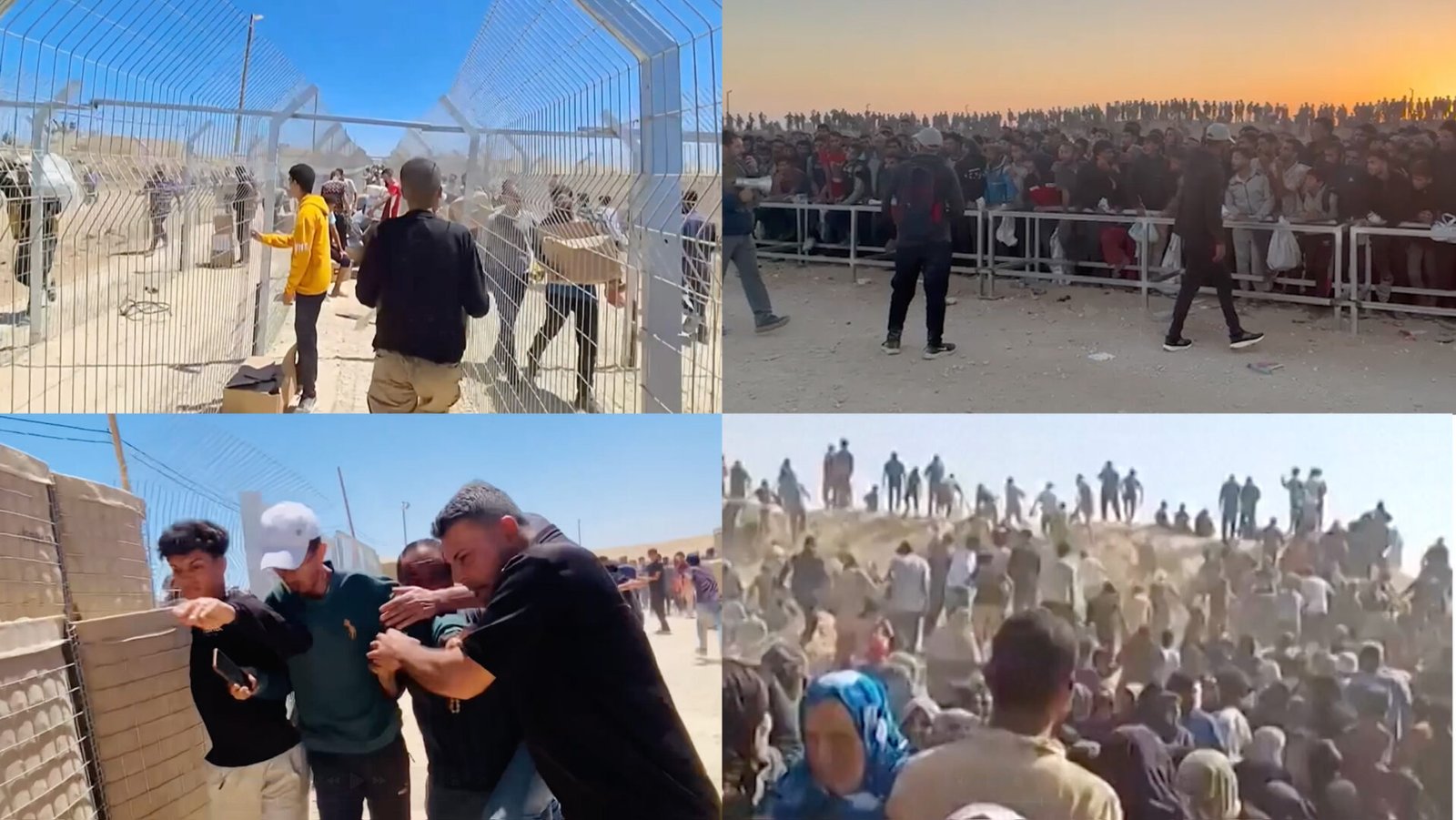Dozens of Palestinians have tragically lost their lives attempting to access critical aid in Gaza, according to reports from local hospitals.
Overnight, two hospitals in Gaza City documented 25 fatalities near a convoy delivering flour and a food distribution point operated by the US- and Israel-backed Gaza Humanitarian Foundation (GHF) within the Israeli military zone of the Netzarim corridor.
The Hamas-run Civil Defence agency claims Israeli forces opened fire during these incidents. Concurrently, there are unconfirmed reports of individuals being crushed by lorries and even shot by other Palestinians during the frantic rush for supplies.
The Israeli military has stated its troops fired warning shots as “suspects” approached them.
Further south, a hospital in Khan Younis reported an additional 14 deaths resulting from Israeli fire near a GHF site in Rafah. The Israeli military has indicated it is investigating these reports from Rafah.
Despite these grim accounts, the GHF maintained that over 43,000 food parcels were distributed at its three centers in Rafah and central Gaza on Wednesday “without incident.” However, deadly confrontations have been reported almost daily near GHF facilities since their controversial aid distribution system commenced operations on May 26.
Gaza’s Hamas-run health ministry indicates that 223 people have been killed trying to reach designated aid distribution areas over the past two weeks alone, with 57 of those fatalities occurring on Wednesday.
An online video shared by Israeli anti-war activist Alon Lee-Green on Wednesday afternoon depicted scenes of profound chaos: hundreds of young Palestinian men are seen desperately rushing from all directions into a GHF distribution center, clambering over earth mounds and metal fencing in a disorganized scramble for food boxes.
In a post on X, Green described the scene as “apocalyptic,” adding: “This is what starving people look like, rushing for food while risking their lives.” This footage surfaced after officials at al-Shifa and al-Quds hospitals in Gaza City had reported at least 25 deaths by gunfire from Israeli troops as people gathered early Wednesday near the GHF’s Wadi Gaza site in the Netzarim corridor.
Moataz Harara, director of al-Shifa’s emergency department, stated that the hospital received approximately 200 injured individuals simultaneously, many suffering from gunshot or shrapnel wounds to the abdomen and pelvis. Civil Defence spokesman Mahmoud Bassal told news agency AFP that the deaths and injuries were the result of “Israeli tank and drone fire on thousands of civilians.”
The Israel Defense Forces (IDF) issued a statement acknowledging the incidents: “Overnight, IDF troops fired warning shots toward suspects who were advancing while posing a threat to the troops, in the area of the Netzarim Corridor. This is despite warnings that the area is an active combat zone. The IDF is aware of reports regarding individuals injured, the details are under review.”
Later on Wednesday, officials at Nasser hospital in the southern city of Khan Younis confirmed another 14 people were killed by Israeli gunfire near GHF sites in Rafah. There have also been recent accounts from individuals stating that Palestinian gunmen have fired upon them, though it remains unclear if these were militias linked to the Israeli military or criminal gangs targeting aid supplies.
Eyewitnesses paint a grim picture of utter despair. “They shoot and throw missiles at us, the gangs attack us – everyone attacks us for a bag of flour. They kill their own people for a bag of flour,” one man recounted.
Another shared the harrowing reality of their children’s hunger: “Our children are being pushed from one community kitchen to another, and the situation is dire. We call on the whole world to stand with the people and demand a ceasefire. We have no part in this war.”
While much attention has focused on the deadly incidents linked to the GHF’s new aid mechanism over the past two and a half weeks, the broader aid distribution system in Gaza appears to be teetering on the brink of complete collapse.
UN agencies and other aid groups are refusing to collaborate with the GHF, arguing its system contravenes fundamental humanitarian principles of neutrality, impartiality, and independence. They also warn that Gaza’s 2.1 million population faces catastrophic levels of hunger following an almost three-month total Israeli blockade, which was only partially eased on May 19.
The US and Israel assert that the GHF’s system is necessary to prevent aid from being misappropriated by Hamas, a claim the UN disputes as a widespread issue, and which Hamas denies.
UN spokesperson Farhan Haq emphasized to reporters in New York on Wednesday: “We reiterate in the strongest terms possible that no-one should be forced to risk their lives to receive aid.”
He further noted that the UN’s World Food Programme has only managed to deliver limited amounts of food and other aid since Israel began allowing restricted supplies into Gaza three weeks prior, primarily due to delays or denials of convoy permissions stemming from expanded Israeli military operations.
The WFP reported dispatching 59 aid lorries carrying 930 tonnes of flour to northern Gaza on Monday night, but the convoy was “stopped along the way and offloaded by hungry civilians in critical need of food to feed their families.”
A GHF spokesman told news agency Reuters: “Ultimately, the solution is more aid, which will create more certainty and less urgency among the population. There is not yet enough food to feed everyone in need in Gaza. Our current focus is to feed as many people as is safely possible within the constraints of a highly volatile environment.”
The Israeli military launched its campaign in Gaza in response to the Hamas-led attack on southern Israel on October 7, 2023, which resulted in approximately 1,200 deaths and 251 hostages taken. Since then, at least 55,104 people have been killed in Gaza, according to the territory’s health ministry.

